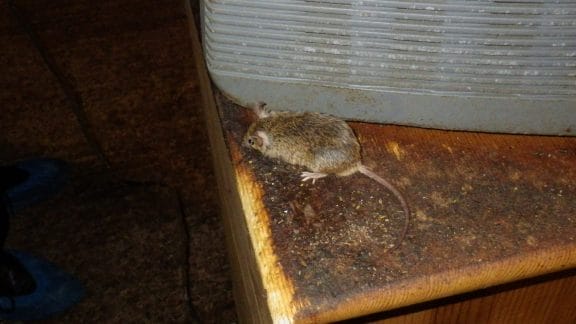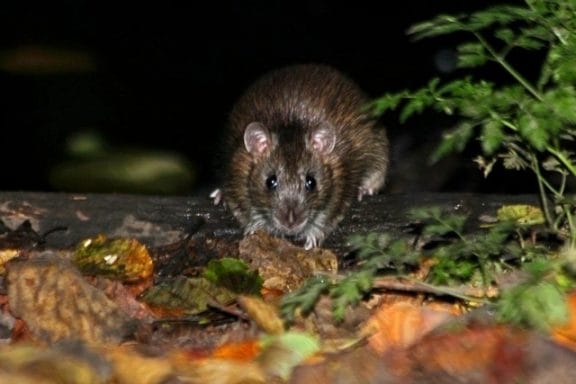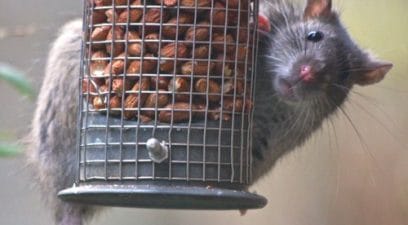Updated On 21/10/2024
Mice and rats might look similar, and while they are both part of the rodent family, they are two species with distinct differences. When homeowners have a rodent issue, they often don’t know whether it’s mice or rats, but the type of rodent you’re dealing with can make a huge difference to how you trap and deal with the problem.
As an experienced pest control company operating throughout Maidstone and Kent, Pest-Tech understands how difficult it can be to tell mice and rats apart. To help, we’ve put together this guide to the differences between rats and mice.
The Importance Of Identifying The Rodent Species
To some, all rodents look the same. So, you may be wondering, how you can tell the difference between a rat and a mouse? The aim of this blog is to identify some key features so you can more easily tell the difference between the two. In general, the way we deal with these rodents is very similar, but it is useful to know what type of pest we’re dealing with before we carry out rodent control. By knowing the difference between the two could speed up the process of getting rid of them and help you understand the type of diseases you might be exposed to. Warning: there are pictures of rodents in this blog- if you’re squeamish, look away!
Differing Characteristics of Rats and Mice
There are a several factors that will help you tell the difference between a rat and a mouse. The two often get mistaken for each other so let’s look at their distinguishing differences. There are of course many types of rats and mice, but for this one we will use the brown rat and the house mouse, both of which you will come across in the house. These are the most common species that you’ll find indoors.
House Mouse
House mice have the following characteristics:
- Small head and body: an adult mouse will grow to approximately 10cm.
- A pointed nose.
- Large ears.
- A thin tail.
- Droppings are like a grain of rice, but black.

Brown Rat
Also known as the common or Norway rat, brown rats can be identified by the following features.
- Small ears
- A blunt nose (snout)
- A long tail that starts thick and gets smaller.
- Big feet.
- Large body (adult is approximately 25cm without their tail).
- Droppings are considerably larger than a mouse and 1 to 2 cm in length.
- Rats tend to use one area as a toilet.
- Although it is called a “brown rat”, its fur is more like a grey colour.

A Few Key Differences Between Rats And Mice
These are the two most common rat and mouse species found inside homes in the UK. There are several other species you might encounter, so it’s important to note the key Some of the main characteristics that set rats and mice apart include:
- Droppings: Each type of rodent droppings are distinctive. Mice droppings look like tiny tapered pellets, about the size of a grain of rice. Rat droppings are much larger, but because of this you’ll usually find fewer rat droppings, whereas mouse droppings are usually left in large clusters and you’ll find more droppings if you have a mouse infestation, as mice tend to drop as they move around.
- Ears: Mice tend to have larger ears proportionally, so they take up more space. However, because rats are larger, their ears are technically bigger, but they look smaller in comparison to mice ears.
- Tails: Rats have thick, hairless tails while mice have long tails that are covered in hair. Mice tails look like thin pieces of string, while rat tails almost look like worms.
- Behaviour: While mice and rats are both nocturnal and generally avoid people, they do have behavioural differences. For example, mice are more curious about new objects than rats and are braver, while rats are more likely to stay away. However, rats are more combative with each other, and you might hear fights and running around more if you have a rat problem.
- Body Size: Rats and mice differ in body length and size, as rats have a thicker body, while mice have slim bodies.
Baby Rats VS Mice
Often, when homeowners see baby rats, they can think that they are mice because of their smaller size. The best way to tell the difference in this situation is to look at the feet, as baby rats will usually have larger feet that mice.
A baby rat’s feet are completely out of proportion to the rest of its body, while an adult mouse will have feet that are in proportion to its size.
Also, mice have a longer tail compared to rats, even baby ones. Rat tails are shorter and thicker with no hair, while mice have thin, hairy tails.
Finally, while this is subjective, mice tend to look ‘cuter’ than rats, even young rats. These differences should help you tell the difference between mice and rats, even if you’re dealing with a young rat.
How To Deal With A Rodent Infestation
If you think you have either rats or mice in your home or business premises, it’s important that you’re proactive. Rodents can spread disease, disturb the peace and cause extensive damage to your property.
Dealing with any rodent infestation can be tough, but the first step is to identify the species you’re dealing with. This guide should help, but if you need further support, Pest-Tech is here for you. Our team can identify the rodent species and remove rats or mice from your property, as well as provide rodent proofing to keep them from coming back.
For more information on rats and mice, visit some of our other blogs on the website. If you are experiencing problems with rodents of either species in the Kent area, get in touch, and our team will be happy to provide expert support. We can treat rodent infestations of all sizes and types on commercial properties and in homes, so call 01622 296055 today.
